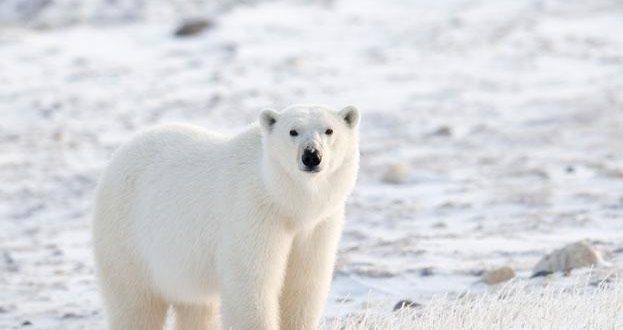Scientists at the University of Alberta have confirmed what has long been suspected — polar bears rely on their nose and the direction of the wind to hunt seals.
Using satellite telemetry data collected from 123 adult polar bears in Canada’s Hudson Bay over 11 years, the researchers merged the movements of polar bears with wind patterns to explore how they looked for seals.
They hypothesized that when a bear smells prey, it moves up-wind to find it. But what is a bear to do before it smells anything at all?
“Predators search for prey using odours in the air, and their success depends on how they move relative to the wind,” explained Ron Togunov, University of Alberta alumnus and lead author on the study. “Travelling crosswind gives the bears a steady supply of new air streams and maximizes the area they can sense through smell.”
While this phenomenon had been suspected in many animals, it had not been quantified in mammals until now.
The best conditions for olfactory hunting, explained UAlberta professor Andrew Derocher, co-author and renowned polar bear expert, takes place at night during the winter.
“Crosswind search was most frequent when winds were slow, when is is easier to localize the source of a certain smell, and at night when bears are relatively active and when vision is less effective, so bears rely more heavily on their sense of smell.”
The findings also raise questions about the implications of climate change.
“Wind speeds in the Arctic are projected to increase, potentially making olfaction more difficult,” explained Togunov. “It is important to understand how polar bear hunting success will be affected by these changing conditions.”
The study, “Windscapes and olfactory foraging in a large carnivore,” was published in Scientific Reports in April 2017.
Agencies/Canadajournal
 Canada Journal – News of the World Articles and videos to bring you the biggest Canadian news stories from across the country every day
Canada Journal – News of the World Articles and videos to bring you the biggest Canadian news stories from across the country every day



